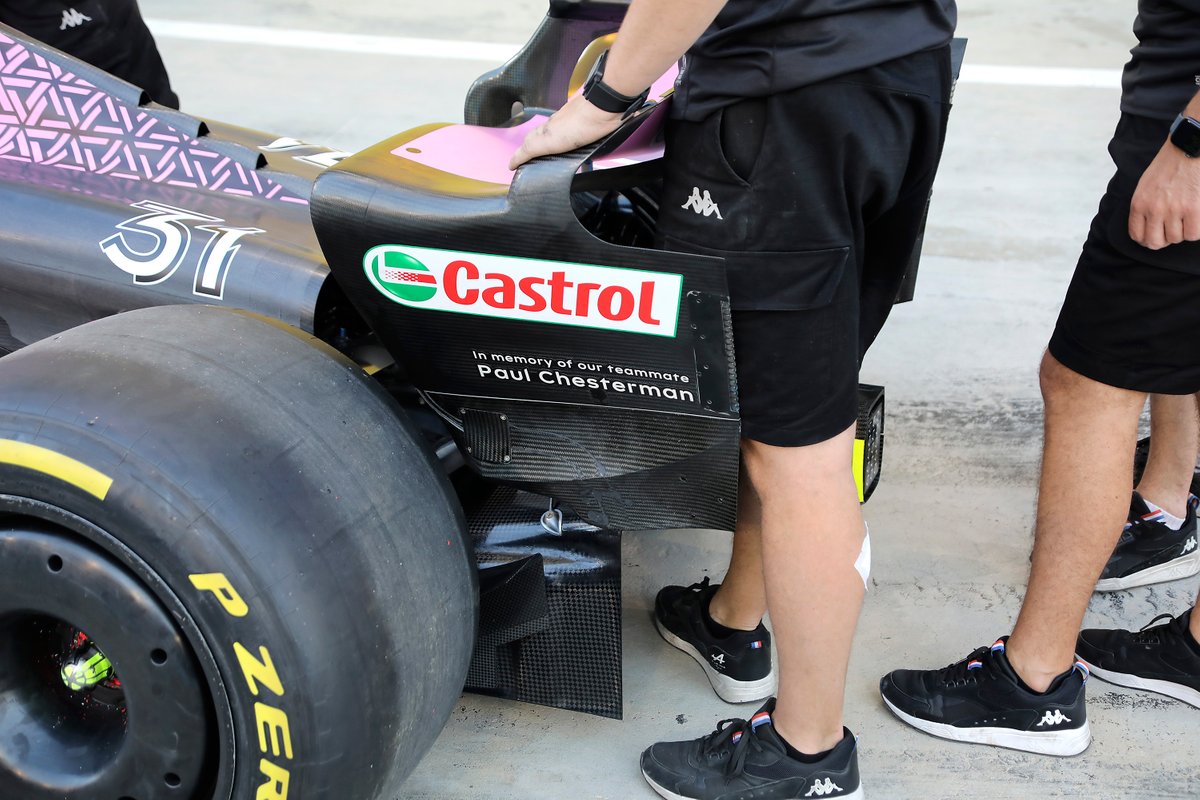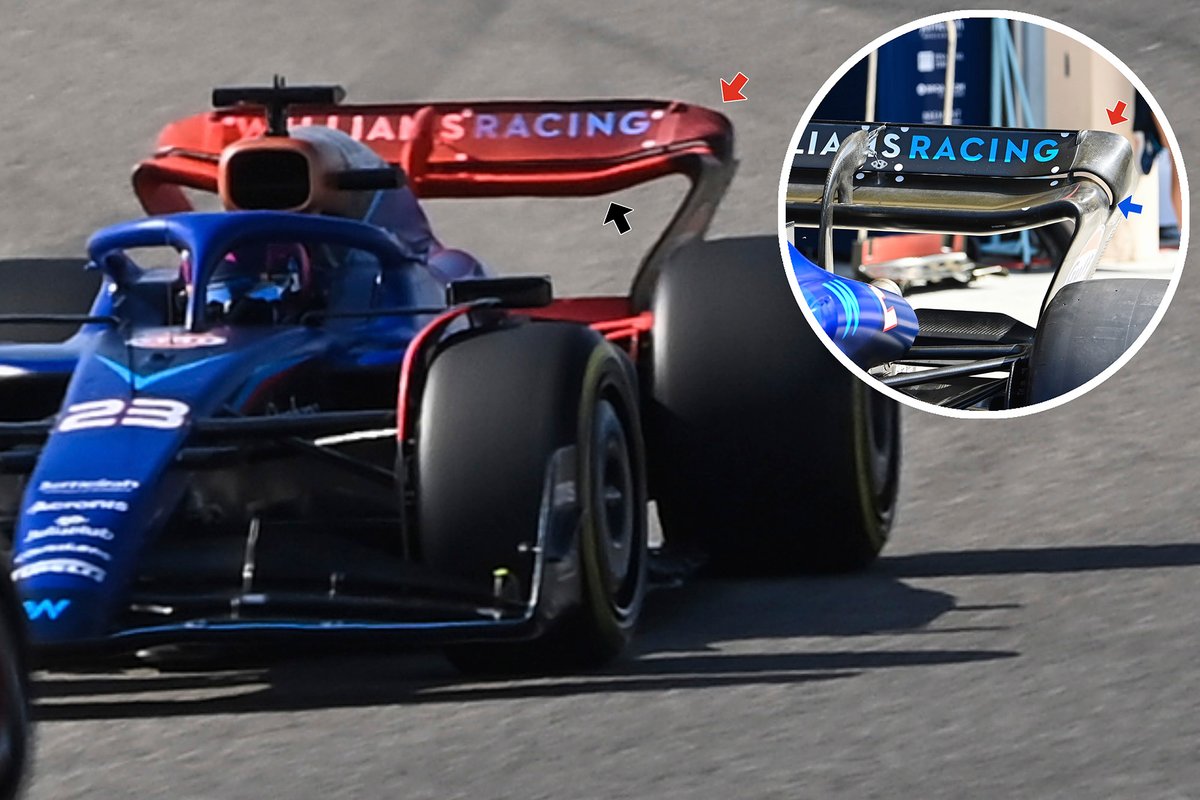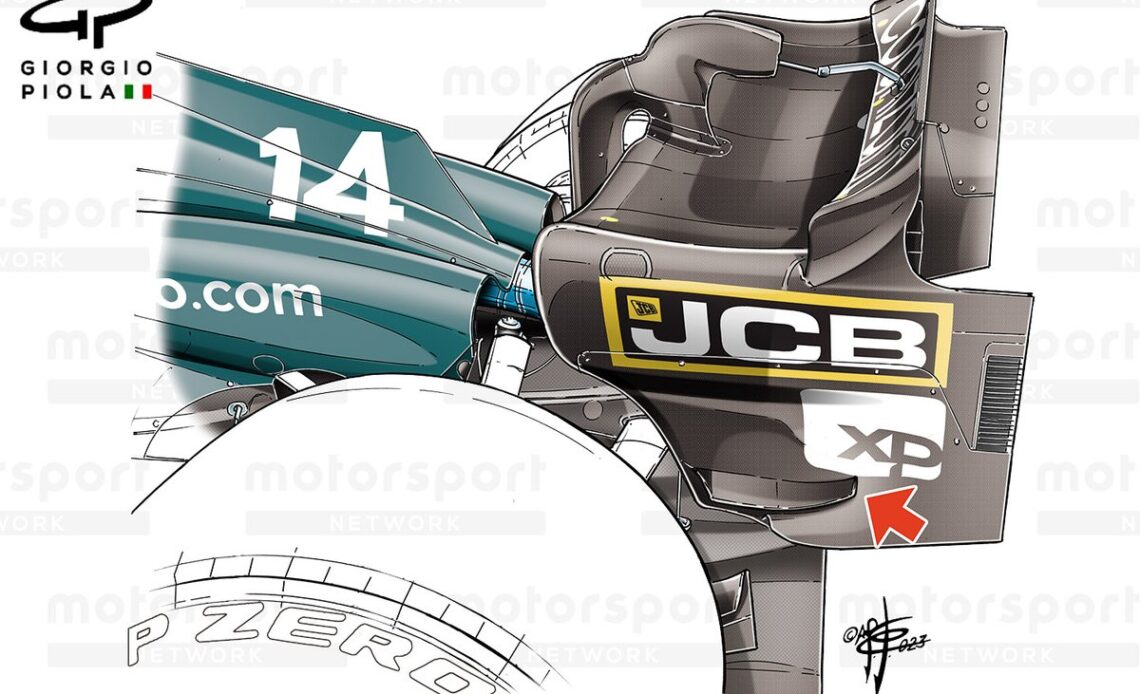Mercedes introduced its widebody chassis blister solution as part of a larger package of updates for the W13 at last season’s British Grand Prix, and it continues to use the solution this year too.
The blister pack, which was added to the sides of the Alfa C43’s chassis in Bahrain – it hadn’t featured during testing – amplifies the aerodynamic effect that all of the teams are trying to create with suspension fairings.
The suspension’s pull- or push-rods and wishbones, along with the steering arms, are already mounted in ways that encourage the air to flow down toward the floor and sidepod. But each team has found a unique mounting position for these elements to get the best mechanical performance, while improving their aerodynamic output.
Furthermore, most designs have a slightly different profile for each of the elements where they connect with the chassis. These bodywork blisters are an extension of those, reducing some of the losses accrued along the chassis and amplifying the downwash effect.
Other interesting details on the Alfa Romeo in this region include the lower rear wishbone leg’s position on the chassis, which – like Ferrari and Haas – finds a home in a lower keel section of the chassis.
The bib wing, a feature we saw many teams adopt throughout the course of 2022 following its introduction by Aston Martin, is mounted much higher on the C43 than other cars.
Teams seeking endplate gains
Aston Martin AMR23 rear wing end plate detail
Photo by: Giorgio Piola

Alpine A523 rear wing
Photo by: Giorgio Piola
Aston Martin and Alpine both appeared in testing with an interesting solution at the base of their rear wing endplates that will undoubtedly capture the attention of rivals.
In both cases, the endplate features a distinctive swage line that promotes an upwashing effect on the local airflow, much like the upwash strikes we used to see in this region. The more prescriptive nature of the regulations from 2022 ruled out the use of the strikes.
Both teams appear to be looking to simulate a similar effect, even if this development is not as potent as what came before.
While there are similarities between the two solutions, it’s clear that Aston Martin’s swage line is much shorter, whilst both have specifically tailored the forward section of the endplate to further boost the design’s potential.
Williams retains its sweet spot

Williams FW45 rear wing comparison (arrowed)
Alex Albon tested a…
Click Here to Read the Full Original Article at Motorsport.com – Formula 1 – Stories…

